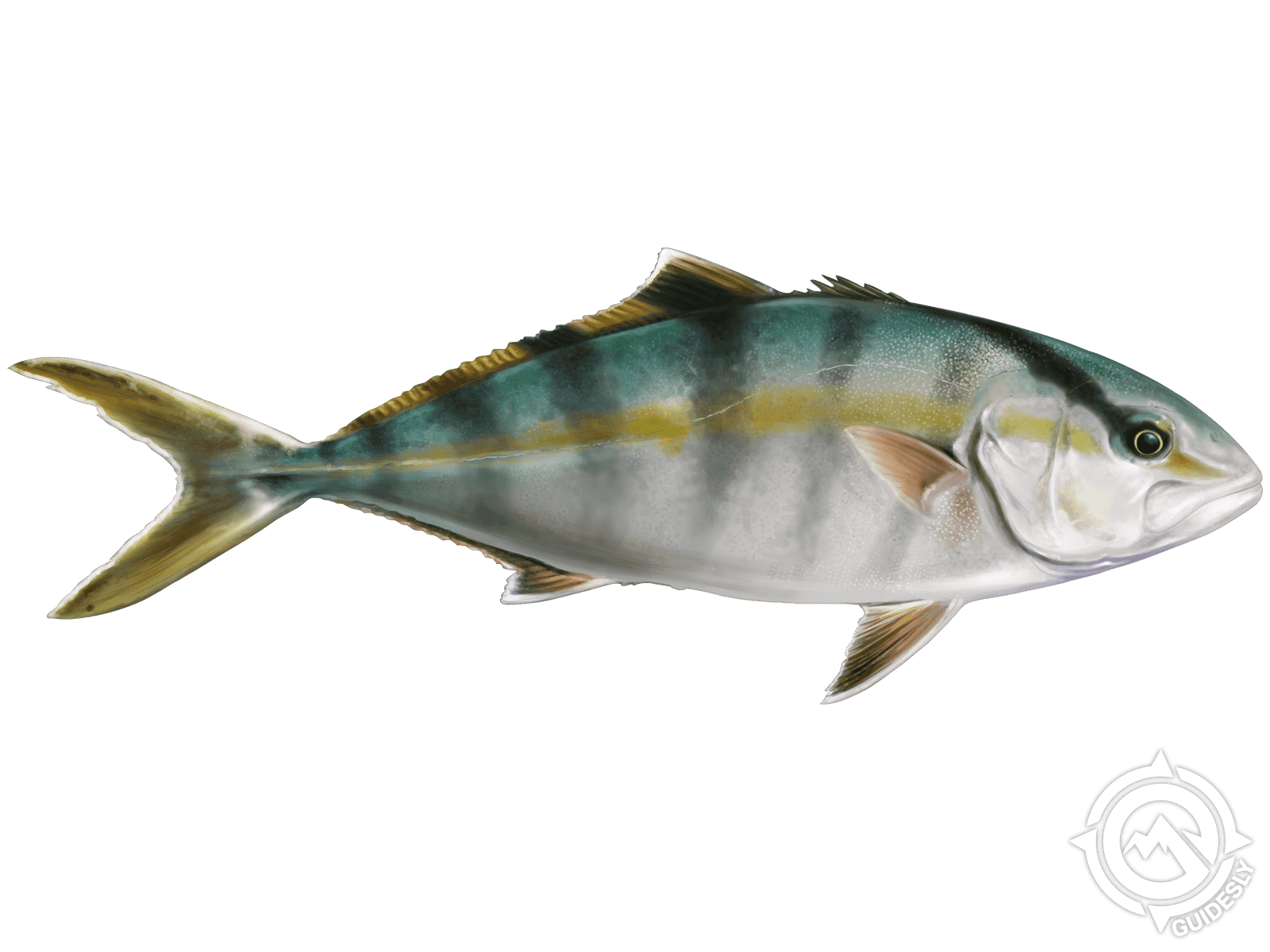Banded Rudderfish

Species Details
Centrolophus Niger
Centrolophidae
Perciformes
Atlantic Coast
3 - 10 lbs.
24" - 59"
About Banded Rudderfish (Centrolophus Niger)
A banded rudderfish is a member of the jack family with shades of blue or green with a touch of brown. True to its name, a young banded rudderfish has six (6) dark vertical bars or bands along its flanks that slowly disappear as it grows older. It also has a dark stripe from its eye running down to its dorsal fin. Its dorsal fin has a faint white margin. Its body is compressed and elongated – like a football – and has a pointed snout. A banded rudderfish also has a smaller eye compared to the rest of the jacks.
It feeds on smaller fishes and crustaceans, especially shrimps.
Interesting Facts about the Banded Rudderfish
- A banded rudderfish's meat is a good alternative for white grouper: same taste and texture but cheaper.
- They are often mistaken as amberjack. The difference is that the banded rudderfish has a shallower body.
- Juvenile banded rudderfish is known to follow sharks and other larger fishes. It is also associated with floating debris and along the weed lines.
Size
A banded rudderfish usually weighs 10 lbs. and under 24 in. long and could grow up to 3 ft.
Habitat and Distribution
The banded rudderfish is a benthopelagic species or a fish found at the bottom of the sea. It can stay in depths as deep as 181 ft. Compared to other species of the same taxonomic genus, a bander rudderfish inhabits shallower waters in hard substrates inshore and offshore. It is available and spawns year-round, and they do so in offshore waters.
It is often found in the Atlantic Coast of America, the Gulf of Mexico, but are most common in Nova Scotia to São Paulo.
Fishing Techniques for Banded Rudderfish
There is no general technique for catching a banded rudderfish, but since they dwell in deeper parts of the ocean, deep-sea fishing would be the best method to catch them. They are relatively easy to catch since they quickly take on whatever bait you use, although it is better to use live ones. It is better to use non-stainless steel circle hooks when using live baits. You can use a net in landing since they are smaller in since.
The banded rudderfish is one of the fishes with catch limits in the Gulf of Mexico. Take note that you're not allowed to catch one that is smaller than 14 in. and it shares a specific annual catch limit between recreational and commercial fishing. Once the limit is reached within the year, you are not allowed to catch one anymore.
A banded rudderfish looks closely similar to amberjacks. Most of its identifying factors are so minimal that anglers would usually just release them back in the ocean instead of misidentifying and catching the wrong fish (and, hopefully, to not violate any state catch limit). It is advised that you use a dehooking device to release a banded rudderfish back to the open waters. Make sure to dehook them in the water and not off it.







